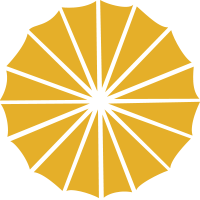Tribal Clothing
As recently as the 1930s and 1940s tribal women wore elaborately decorated, woven traditional dress; this has largely been replaced by a simplified version of dress worn everyday in rural areas.
In the north, women wear a loose-fitting shirt with a skirt and headscarf, while women in the south may wear a loose-fitting shirt and pants with a headscarf. Among tribal groups, fabrics are woven on back strap or simple looms, using homegrown cotton, hemp, or ramie, to make striped waistcloths and warp-faced ikat. Embroidery includes motifs of trees, flowers, eight-pointed stars, and sugarcane leaves. Brocade fabric is produced using up to 150 supplementary threads in cotton or silk. Dress is worn with pride as a marker of ethnic identity among hill tribes and subgroups. Each group has local nuances in spoken dialect and in women's clothing.
In the North
The Tai people form eight subgroups totaling over three million people in northern Vietnam. Other tribal groups living in northern Vietnam are the Jarai, the Phen, the Lao, the Lu, the Nung, and the Pa Di, while the Hmong, Yao, and Pathern spread from the north to the northwest. Women's garments are distinctive to each group, and permutations of indigo-dyed cotton, embroidery, and silver decoration signify tribe membership, gender, and status.
Many Tai women wear long black tunics, while those worn by the Nung (Ngan) are shorter. The Tai also wear a wrapped, sarong-style waistcloth with bands of decoration. Pants or leggings are worn under the skirt, a waist tie holds the waistcloth in place, and pendants on chains of silver links complete the ensemble. The Jarai decorate loincloths and waistcloths with geometric bands of supplementary weft decoration. The Phen wear brown-colored clothing; the Lao wrap their heads in cone-shaped headdresses; the Pa Di women wear a headdress shaped like a house roof and trimmed with silver balls.
The garments of some groups are similar to those of other groups; for example, Nung and Pa Di women both wear a short black tunic that opens on the right, with a decorated stand collar, and contrasting blue and white cuffs. The fabric seam at the sleeve join is embroidered and the front fastening is decorated and fastened with silver balls. The Lu wear a short black cotton tunic with a peplum (a short overskirt attached at the waist). The tunic is decorated at all seam joins with embroidery, and adorned with silver coins at the front. The waistcloth has a vertically embroidered and appliquéd central panel, and an outer waistcloth with an embroidered panel is worn around the hips. The Hmong batik the central panel of their distinctive circular skirts using bamboo pens and beeswax. Made from hemp, cotton, and silk, and now stitched by machine,women's circular pleated skirts are indigo dyed, batiked, embroidered, and appliquéd. Additional Yao decoration includes tassels, beading, fringing, and silver lozenges used as fastenings. The linear-patterned batik is applied using different sized pens for eight-pointed stars, spirals, flowers, and gourds. The Yao use larger motifs, and the Pathern, use red as a ground color rather than black. The Lisu, Akha, Hmong and Micu all use Chinese methods in the construction of their garments, especially jackets, trousers, pleated skirts, aprons, and kaftans.
Indigo dye on cotton cloth is decorated with colorful bands of appliqué, cross-stitch embroidery, and the inclusion of tufts of wool, seeds, silver bosses, and club-shaped pendants. Motifs are mostly geometric or record the natural environment. Weaving and needlework are prized skills; a prospective bride's work may be examined by future in-laws as a means to determine character. The Muong live in an intermediate area between the mountains and the coastal plains; here they grow cotton used for white, front buttoning, women's tunics and folded headdresses, similar to the caps of Western nurses. These are worn with plain green or patterned waist sashes and long waistcloths.
In Central and Southern Vietnam
The Mon-Khmer of Truong Son Cordillera and the Central Highlands are spread throughout the central and southern areas of Vietnam. Other groups in this area include the Bahnar, the Ta Oi, the Cotu, and the Gie-Trieng. The Mon-Khmer has a population of three-quarters of a million people, and includes fifteen subgroups. The Khmer people have rich textile traditions, producing belted aprons, vests, skirts, waist ties, scarves, blankets, bags, and baby carriers. The Bahnar weave cotton on an Indonesian-style loom on which the warp threads are held stretched between beams six feet above the ground and tensioned by a wooden back rest. This kind of loom is used to produce supplementary weft cloth up to a meter wide. Fabric is indigo and may combine pre-dyed threads. The Mon-Khmer use predominantly black, dark red, and ochre colors. The fabric of the Ta Oi, the Cotu, and some Gie-Trieng has glass or lead beads strung on the horizontal weft threads before weaving the decorative motifs.




